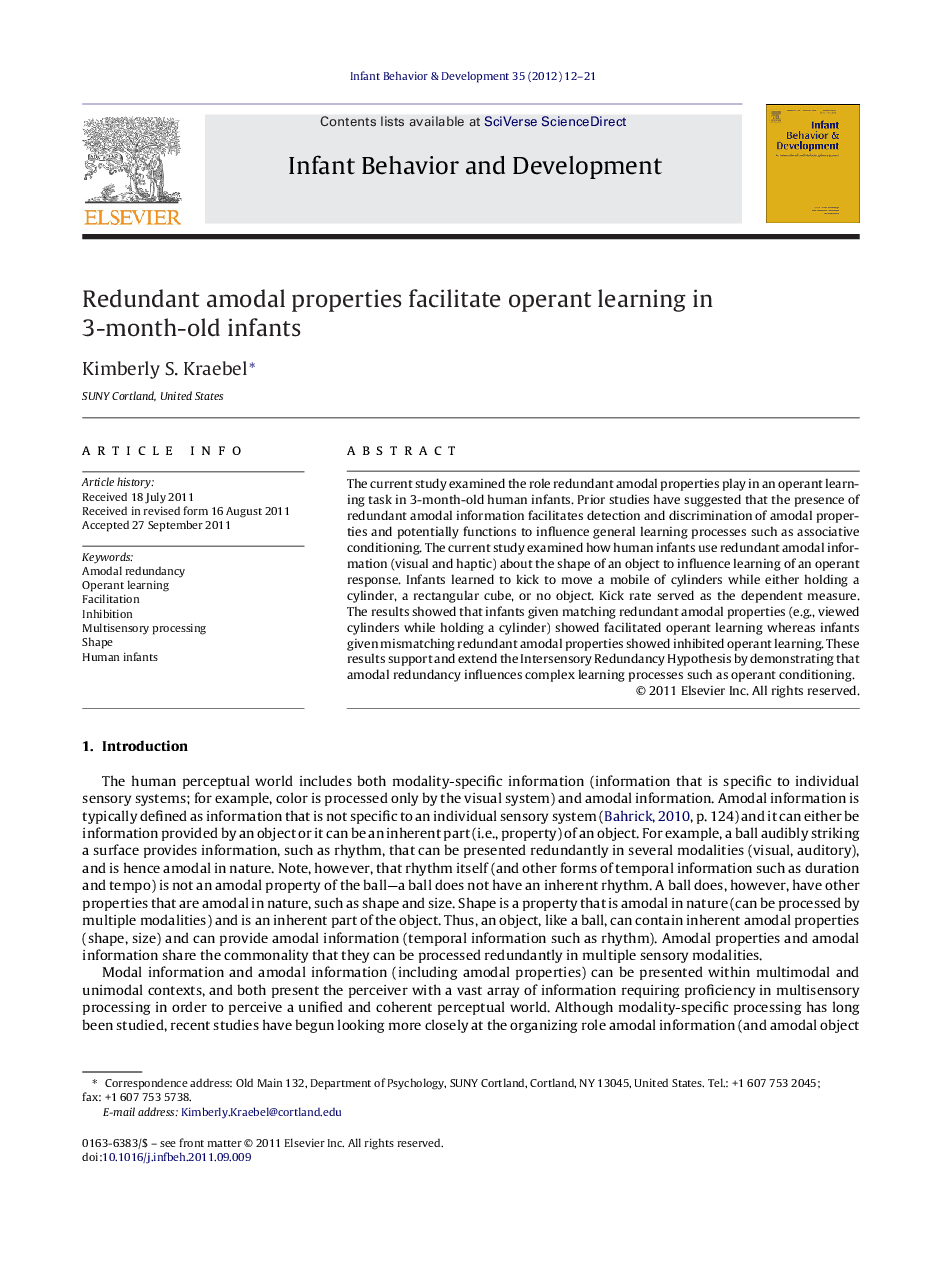| Article ID | Journal | Published Year | Pages | File Type |
|---|---|---|---|---|
| 917259 | Infant Behavior and Development | 2012 | 10 Pages |
The current study examined the role redundant amodal properties play in an operant learning task in 3-month-old human infants. Prior studies have suggested that the presence of redundant amodal information facilitates detection and discrimination of amodal properties and potentially functions to influence general learning processes such as associative conditioning. The current study examined how human infants use redundant amodal information (visual and haptic) about the shape of an object to influence learning of an operant response. Infants learned to kick to move a mobile of cylinders while either holding a cylinder, a rectangular cube, or no object. Kick rate served as the dependent measure. The results showed that infants given matching redundant amodal properties (e.g., viewed cylinders while holding a cylinder) showed facilitated operant learning whereas infants given mismatching redundant amodal properties showed inhibited operant learning. These results support and extend the Intersensory Redundancy Hypothesis by demonstrating that amodal redundancy influences complex learning processes such as operant conditioning.
► The functional role of amodal redundancy in an operant learning task was examined. ► Infants given matching amodal redundancy expressed facilitated operant learning. ► Infants given mismatching amodal redundancy expressed inhibited operant learning.
